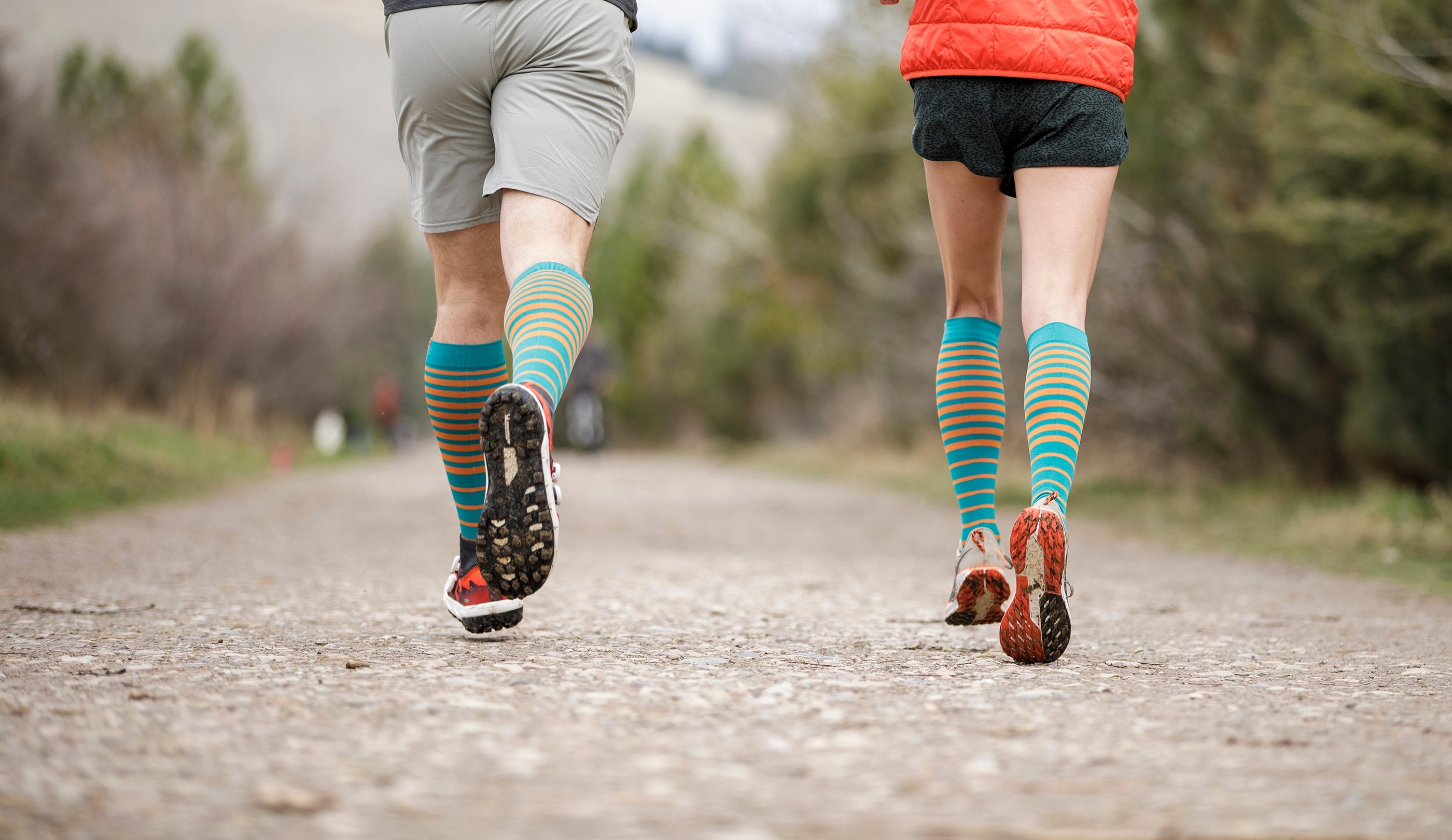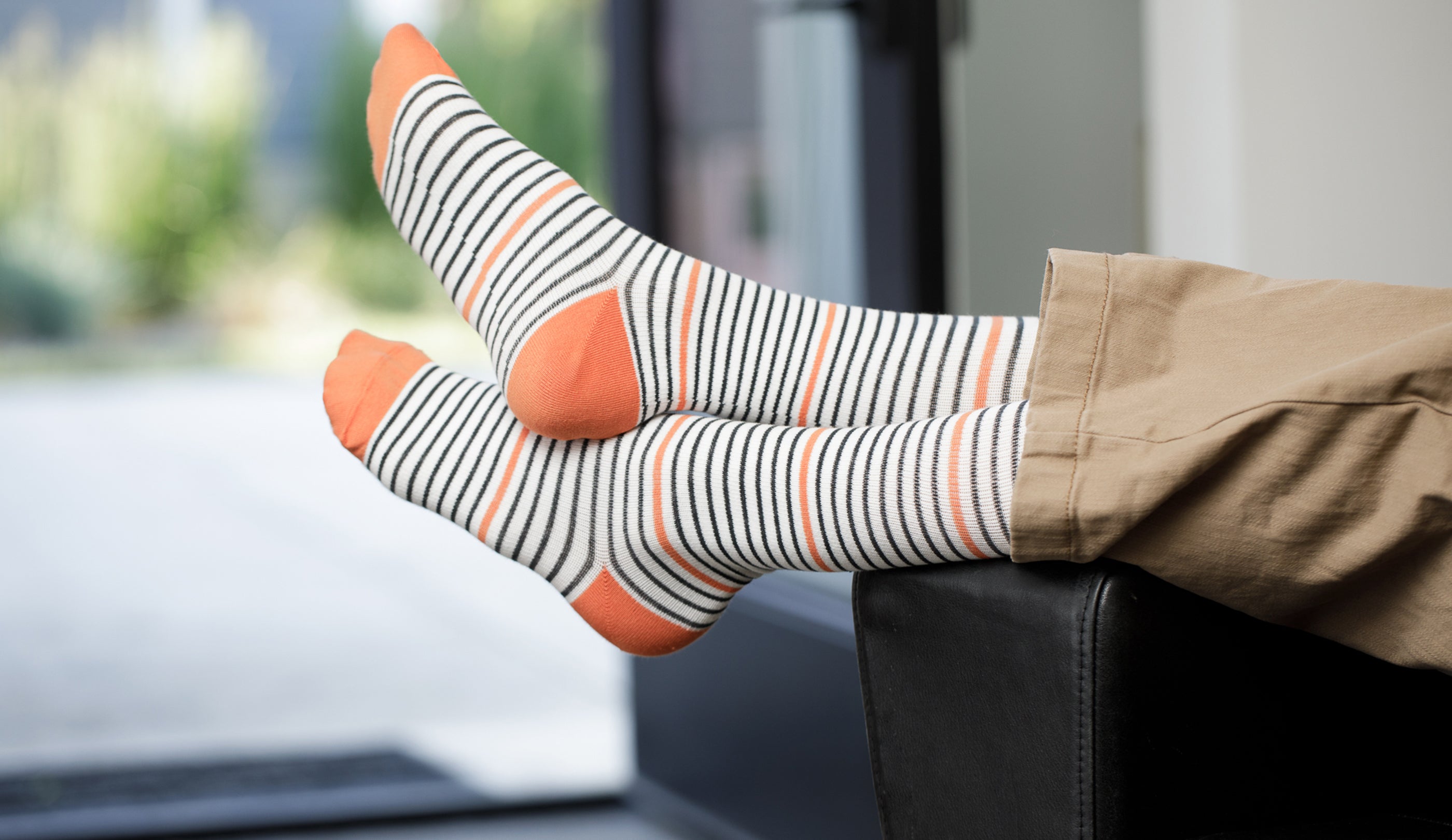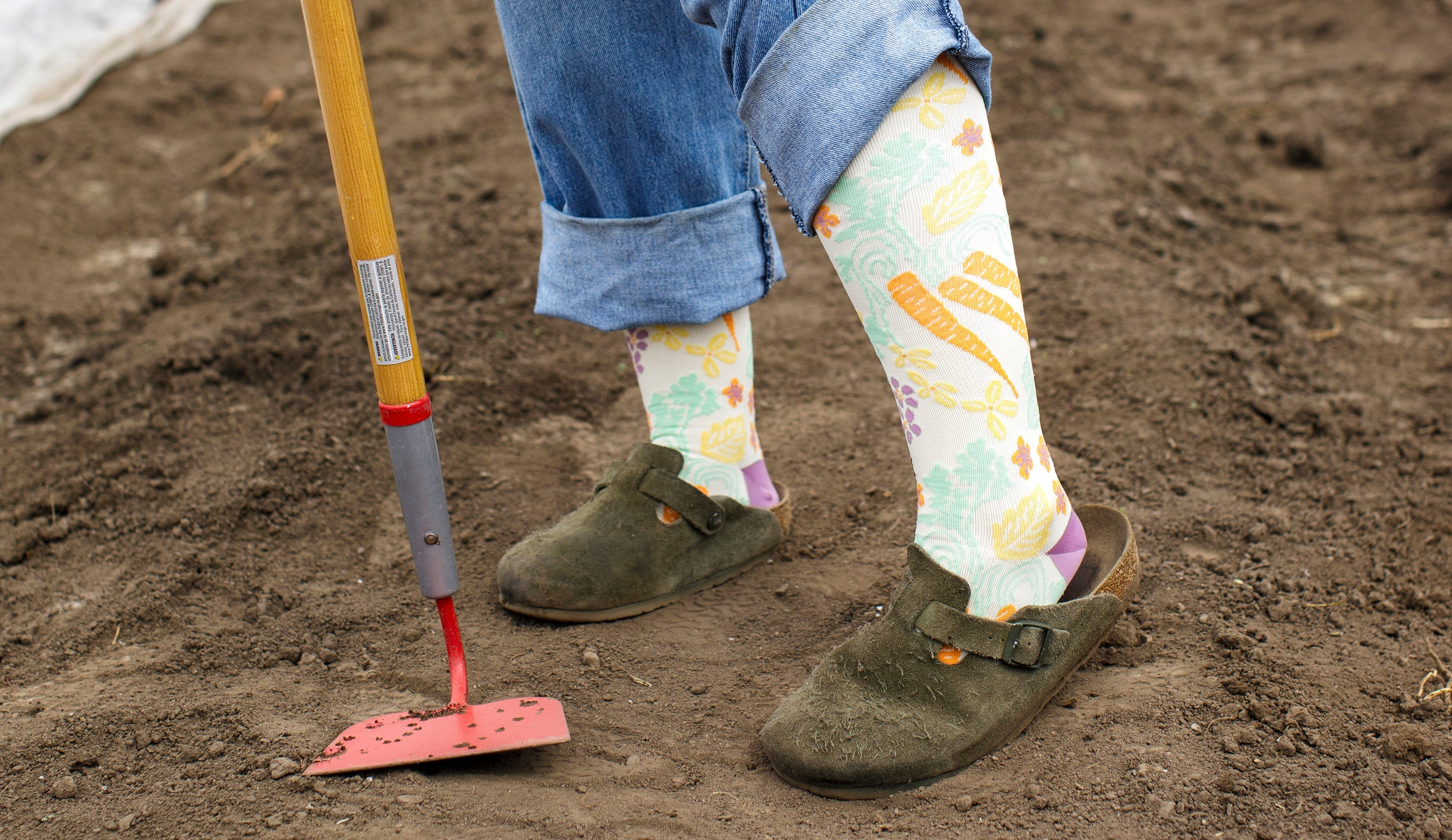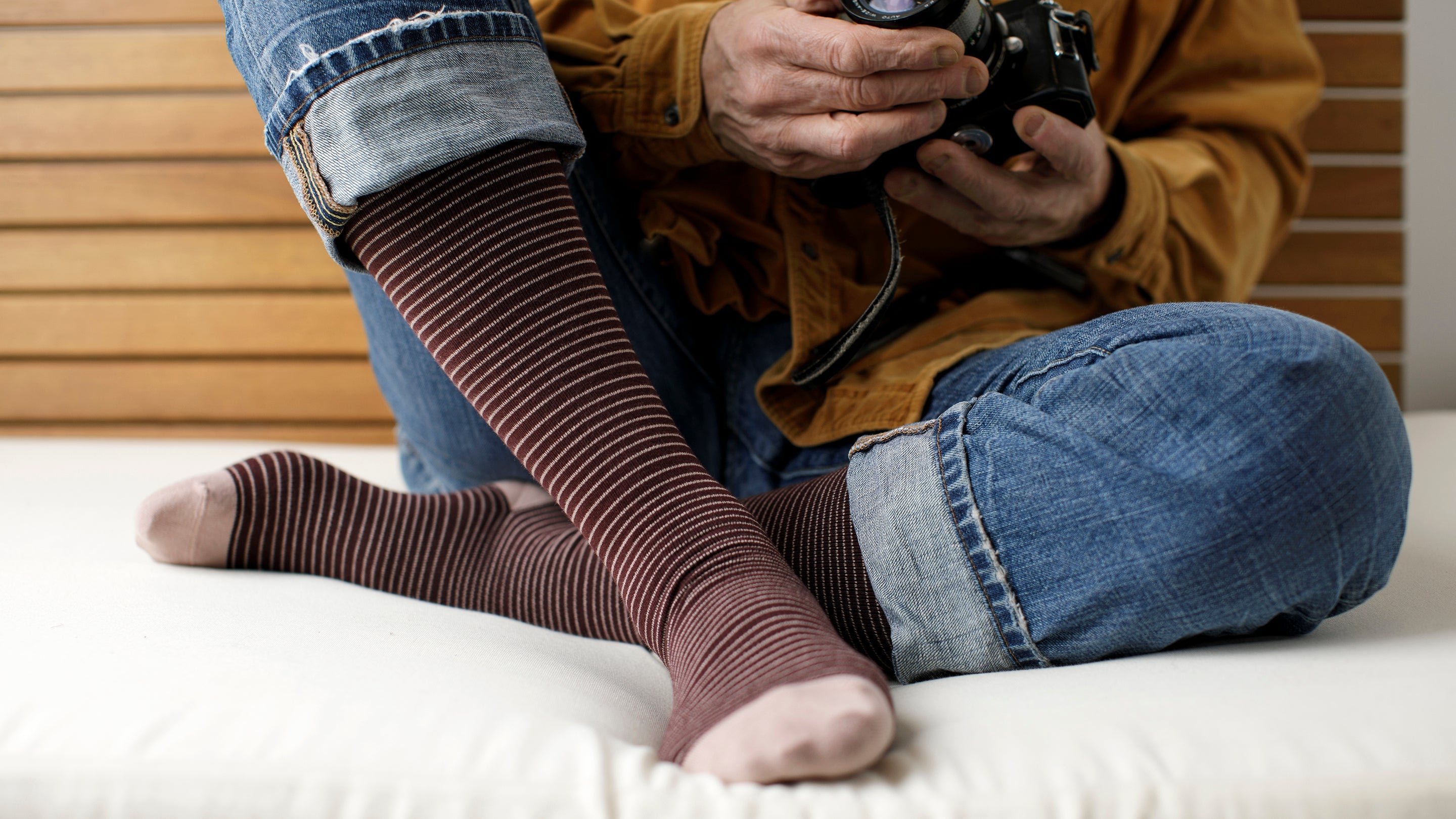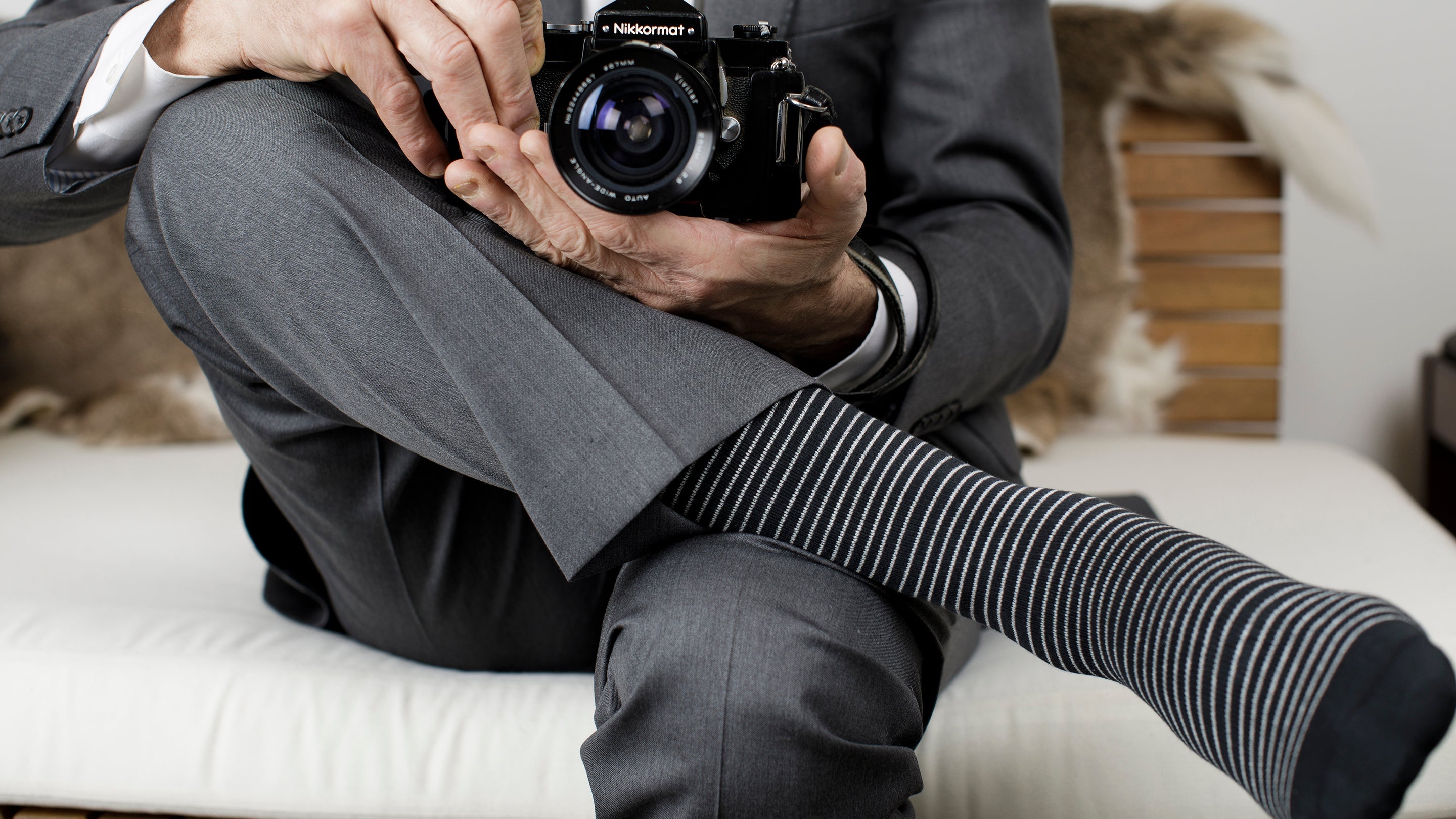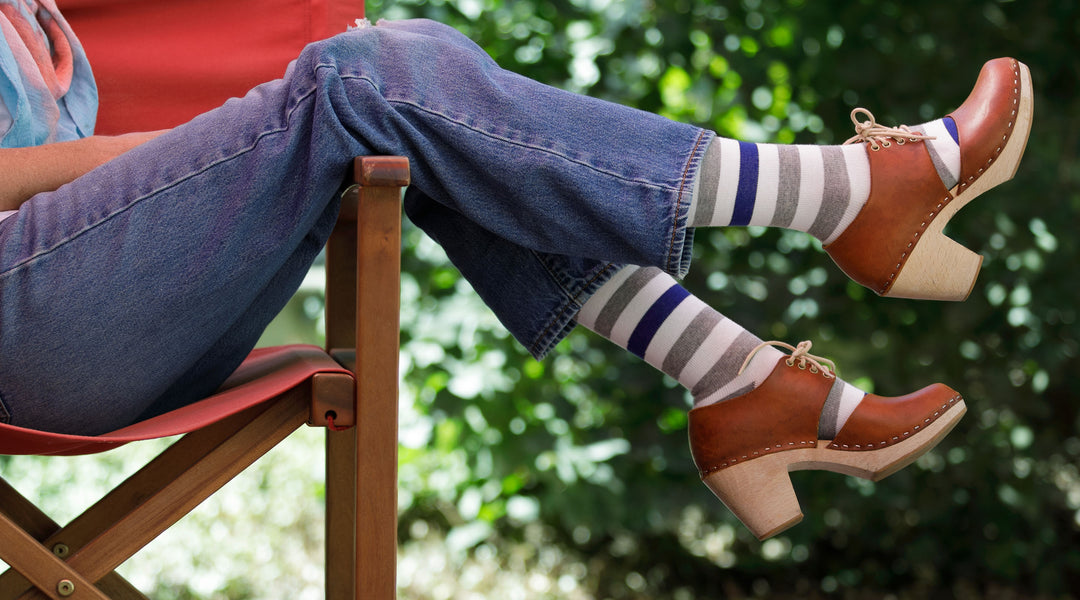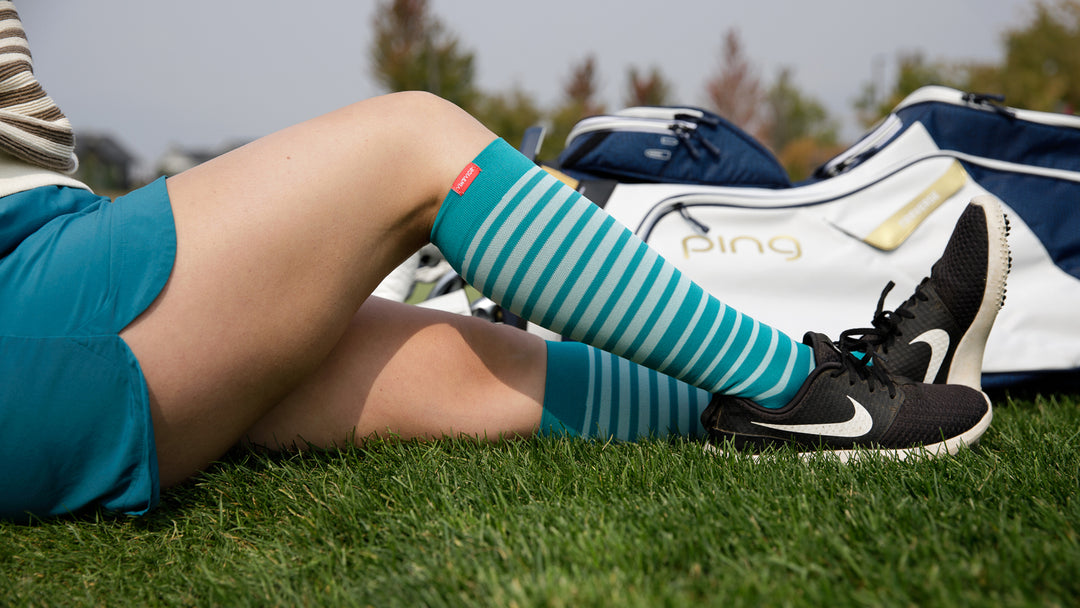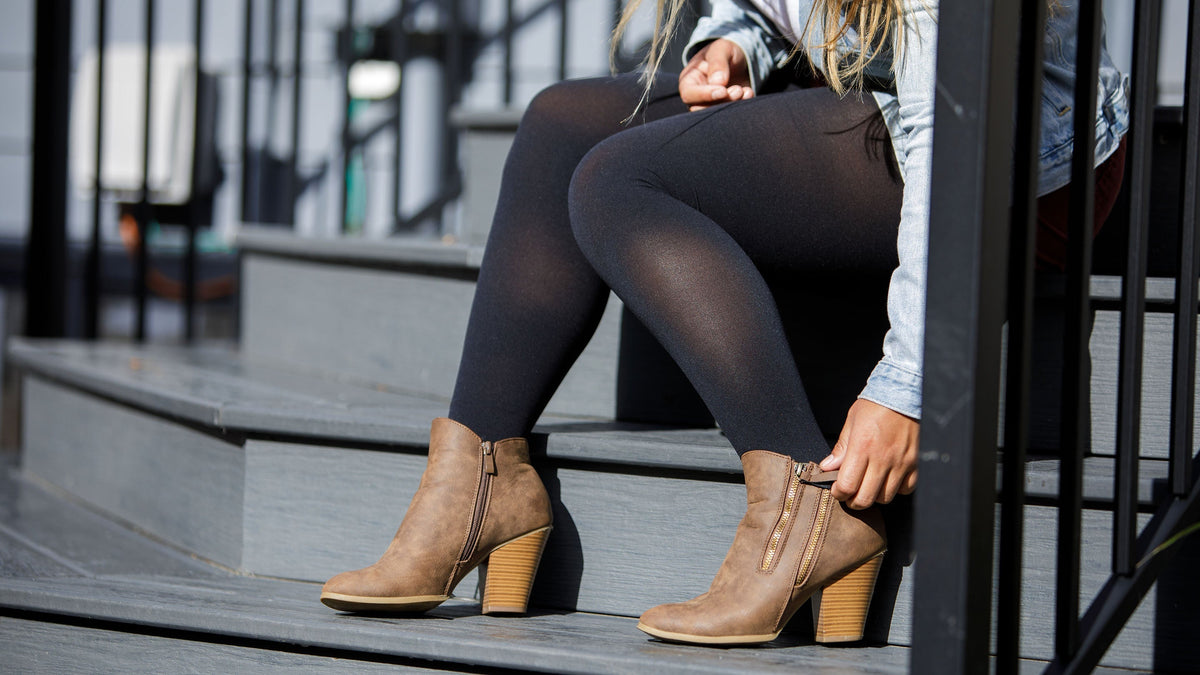

When it comes to compression garments, we often talk about socks and stockings interchangeably. But, there’s a difference: the classic graduated compression socks are knee-high, which helps improve blood flow by squeezing the lower legs below the knee. Compression stockings often cover the thighs, and many go up to the waist (when we normally refer to them as leggings or tights).
Medical research shows us that therapeutic pressure can be beneficial for your health, and compression stockings and tights are a great option to improve swelling, leg pain, and other health problems. However, because of the tight fit, they are a little more difficult to put on than pants. Once you know the steps, it is easy to put on thigh-high compression stockings so you can feel your best. In this article, we’ll give you tips to make it easy to put on compression stockings and how you can get the most out of your pair.
How to Wear Thigh-High Compression Stockings
Putting on your thigh-high compression stockings may seem like a challenge because of how tight they fit. It is important to know that the tightness is needed for best results. So, below are the steps you can take to overcome difficulties with putting on compression stockings. Following these steps will ensure you get the maximum comfort and benefit when wearing your stockings.
Step 1: Turn the Stockings Inside Out
Start by turning your compression stockings inside out, as we will then roll them up the right way. Reach inside the stocking and grab the heel or toe to do this.
Step 2: Insert Foot into the Toe Section
It will now be easy to put your foot into the end of the stocking. Align the toes with the toe seam first, then make sure the heel is nestled into the heel section as well. This ensures your feet are positioned optimally and will avoid any rubbing or discomfort.
Step 3: Ensure the Heel Is Positioned Properly
Always position your heel well in the heel cup of your compression stockings or socks. If there is additional material left either at the heel or toe end after aligning your feet, this means your pair is too large and you’ll need to change sizes. You can check out more details about finding the right size for you in our guide.
Step 4: Pull the Stockings Up the Leg Slowly
Once the foot section is all set, slowly roll up the stockings, pulling gently to set them in place. Ensure there is no bunching or folding in the fabric as you do this. By unrolling bit by bit, you’re avoiding any unnecessary pulling at the stocking, which can cause rips and tears in thin materials, or may damage the fabric.
Continue to roll the compression stockings to the top of the thigh or up to your waist, depending on the design you’re wearing.
Step 5: Smooth Out Any Wrinkles
Once you’re done, have a quick inspection to ensure the stockings are on as they should be – without wrinkles, folds, or bunching. If you see any, carefully smooth them out with your fingers and palms without using your nails.
Final Step: Adjust for Comfort and Fit
Finally, make sure your stockings are pulled up to the top of the thigh so they give you the maximum coverage for compression benefits. We also recommend walking a few steps, sitting down, and getting back up, to ensure the material does not shift too much across your legs and that you are as comfortable as possible.

Tips and Techniques to Wear Compression Stockings Smoothly
Compression stockings are great for boosting blood flow, supporting the muscles and joints, and enhancing your everyday comfort. As long as you wear them correctly, so they don’t roll down or cut your circulation, they can be important aides in recovery (from either physical activity or surgery). Here are more tips for you about wearing your thigh-high stockings so you can get the most out of them.
Choosing the Right Stocking Size
Many people become concerned with how tight compression stockings and socks feel initially, so they tend to err on the side of wearing too loose garments. That defeats the purpose of compression: to apply therapeutic pressure to the limbs, supporting the muscles, and improving blood flow.
So, to make sure you’re getting the most out of your compression stockings, always choose the right size by using the manufacturer’s sizing charts. At Vim & Vigr, we provide a detailed sizing chart with every product, using your height and weight to determine the size of compression tights.
Prepping Skin
Keeping your skin in good condition will help make it easier to put on compression stockings and avoid injuries. You should never put on your tights over cuts, grazes, or open wounds. You should also avoid trying to put them on right after moisturizing.
If you can, exfoliate and moisturize the skin on your legs regularly to keep it from being flaky or dry. This can help stockings slide on more easily.
Sitting Down While Wearing Stockings
It’s always easier to put on thigh-high stockings when you sit down, and with compression ones, it’s recommended to put them on while sitting! You won’t have to worry about balancing with one foot in the air as you try to slide your compression garments up the leg, after all.
Using Helpful Tools for Putting On Compression Stockings
Some people use gloves to protect their compression stockings when they put them on, particularly if they have long nails. This also helps if you are wearing jewelry and you don’t want to take it off.
Also, you can use some helpful tools like a stocking donner to make putting on stockings easier.
Caring for Your Compression Stockings
Our Vim & Vigr compression stockings are made from high-quality nylon that is flexible, breathable, and moves easily with your body. To keep them in good condition for as long as possible, we recommend washing your compression stockings after every wear, using cold water and ideally in a delicate machine wash cycle, or by hand. You can find out more about caring for your socks in our complete guide.
–
Overall, thigh-high compression stockings are extremely beneficial for those who need more coverage from their compression garments. They boost blood flow and support the muscles all the way up to the pelvic area, while also adding some protection and a welcome massage. If you follow our detailed instructions for putting them on and caring for them, your compression stockings will feel comfortable and last longer.
Browse our collection of tights and stockings, then have a look at knee-high compression socks for more stylish options.
References
Berszakiewicz, A., Kasperczyk, J., Sieroń, A., Krasiński, Z., Cholewka, A., & Stanek, A. (2021). The effect of compression therapy on quality of life in patients with chronic venous disease: a comparative 6-month study. Postepy dermatologii i alergologii, 38(3), 389–395. Read it here.
Broatch, J. R., Brophy-Williams, N., Phillips, E. J., O'Bryan, S. J., Halson, S. L., Barnes, S., & Bishop, D. J. (2020). Compression Garments Reduce Muscle Movement and Activation during Submaximal Running. Medicine and science in sports and exercise, 52(3), 685–695. Read it here.
Charles, T., Mackintosh, D., Healy, B., Perrin, K., Weatherall, M., & Beasley, R. (2011). Merino wool graduated compression stocking increases lower limb venous blood flow: a randomized controlled trial. Advances in therapy, 28(3), 227–237. Read it here.
Kim, D. S., Won, Y. H., & Ko, M. H. (2022). Comparison of intermittent pneumatic compression device and compression stockings for workers with leg edema and pain after prolonged standing: a prospective crossover clinical trial. BMC musculoskeletal disorders, 23(1), 1007. Read it here.
Kurosawa, Y., Nirengi, S., Tabata, I., Isaka, T., Clark, J. F., & Hamaoka, T. (2022). Effects of Prolonged Sitting with or without Elastic Garments on Limb Volume, Arterial Blood Flow, and Muscle Oxygenation. Medicine and science in sports and exercise, 54(3), 399–407. Read it here.
Meng, J., Liu, W., Wu, Y., Xiao, Y., Tang, H., & Gao, S. (2023). Is it necessary to wear compression stockings and how long should they be worn for preventing post thrombotic syndrome? A meta-analysis of randomized controlled trials. Thrombosis research, 225, 79–86. Read it here.
Partsch H. (2012). Compression therapy: clinical and experimental evidence. Annals of vascular diseases, 5(4), 416–422. Read it here.
Partsch, H., Winiger, J., & Lun, B. (2004). Compression stockings reduce occupational leg swelling. Dermatologic surgery: official publication for American Society for Dermatologic Surgery [et al.], 30(5), 737–743. Read it here.
